Shiny, red chunnis (sacred cloth) tied to the sacred Bakul tree fluttered in the breeze at the Biraja temple Shakti Peeth in Jajpur Odisha, India. Our attention was then instinctively drawn towards the Shikhara of the temple, where we saw a flock of birds, circumnavigating the temple as if in reverential obeisance. Our minds flew to the temple of Jagannath in Puri where it has been observed that birds do not fly near the Shikhara.
We were at the famed Biraja Devi Temple, known variously as Biraja Shakti Peeth, Biraja Khetra Jajpur, while the Jajpur region itself is known as Vaitarani Teertha according to ancient Hindu texts. We were eager to learn about Biraja Temple, Biraja Temple History, legends of Maa Biraja Devi, Biraja Devi Temple Timings, and the Shakti Peethas, and made our way towards the Garbagriha or sanctum of the ancient temple.
Table of Contents
Biraja Temple Jajpur
The Biraja Temple Jajpur Odisha is referred to as, “Odhyam Girijadevi,” in the Asta Dasha Shakti Peetha Stotram of Adi Shankaracharya. This underlines the importance and sanctity of the Biraja Devi Temple Jajpur. Adi Shankaracharya is also responsible for integrating Shakti worship into mainstream Hinduism. His classic works like Saundaryalahari and Mahishasura Mardini Stotra are milestones in the devotional stotras (Hymns) of Shakti worship.
Biraja Temple Shakti Peeth Jajpur – Shaktipeeth Of Odisha
The ancient Biraja temple is believed to be located at the place where the navel of Sati fell when Lord Shiva was roaming the universe in despair, carrying her lifeless corpse. The Biraja Devi Shaktipeeth at Jajpur in Odisha is one of the 18 most important Shaktipeeths as enumerated by Adi Shankaracharya himself in his Asta Dasha Shakti Peetha Stotram.
Quick Facts About Biraja Temple Jajpur
Here is some good-to-know information before visiting the temple which is sure to give you a better orientation and understanding.
- Biraja Mandir Jajpur is one of the two Shaktipeeth of Odisha, the other is Tara Tarini temple in the Ganjam district
- Goddess Biraja, a form of Durga or Parvathi is worshipped at the Jajpur Biraja Kshetra
- The temple finds mention in many Puranas and other ancient Hindu texts
- Besides being a Shakti Peeth, the place is also known as Nabhi Gaya, one of the Tri Gaya Kshetras, along with Gaya in Bihar and Pithapuram in Andhra Pradesh
- The temple is located near the banks of the holy Vaitarani river which is mentioned in the Skanda Purana and other Puranas
- The only Rath Yatra for a Devi in Odisha happens at the Birajadevi temple in Jajpur
What Is A Shaktipeeth?
It is important to get a brief understanding of what a Shaktipeeth is before we move on to more details of the Biraja Maa temple of Jajpur. The concept of Shaktipeeth is one of the pillars of the Shaktism tradition in Hinduism, and along with Devi Mahatmya of the Markandeya Purana forms its core. Devi Mahatmya which is also referred to as Durga Saptashati, is a popular sacred text, especially in the states of Assam, Odisha, West Bengal, and Bihar.
Legend Of Sati And Shiva – Biraja Temple Shakti Peeth Jajpur
Sati, the daughter of Daksha had married Shiva against her father’s wishes. Daksha did not like Shiva as he lived in the cremation grounds and smeared himself with ash and had strange attendants. Once it so happened that Daksha organized a grand Yajna or sacrifice ritual, he invited all the Gods and Goddesses and other divine beings, but knowingly left out Sati and Shiva from the invitation.
Sati who came to know about it was hurt, and she asked Shiva to take her to the Yajna. But Shiva in his wisdom dissuaded her from going. However, an adamant and irked Sati arrived at the Yajna, only to be insulted by her father, who also hurled abuse at Shiva. A hurt Sati could not take the insults any longer and she flung herself into the sacrificial fire and immolated herself.
Shiva flew into a rage when he heard about the incident. He went to the place of the Yajna and created havoc, destroying everything and beheading Daksha. He then retrieved the charred body of Sati and carrying it on his shoulders began the dance of destruction, Tandava Nritya.
The Gods were alarmed as the entire universe was now on the verge of destruction because of Shiva’s wrath. Lord Vishnu then used his Sudarshan Chakra, which cut the body of Sati into pieces. As Shiva roamed the heavens, her body parts fell at different places on the earth. Wherever her body part fell, soon came to be known as a Shakti Peeth. They were regarded as centres of primordial energy.
The number of Shaktipeeths and even their locations vary from one ancient text to other. However, it is generally believed that there were 101 places where the remains of Sati fell. Of these 51 are regarded as the most important of the Shakti Peeths.
Adi Shankaracharya spells out 18 of these Shaktipeethas, and one of them is the Biraja temple of Jajpur, where he mentions the deity as Girija. The Brahmanda Purana mentions 64 Shakti Pithas, while the Skanda Purana lists 20 Shakti Pithas.
Biraja Temple Jajpur In Ancient Texts Legends of Maa Biraja Temple Jajpur
The Biraja temple and its sacred nature are mentioned in many of the ancient texts of Hinduism. The Goddess Girija or Biraja, the holy temple and the river Vaitarani find mention in the Skanda Purana, the Brahmanda Purana, the Vayu Purana, as well as the great Indian epic, Mahabharata.
Brahmanda Purana mentions Viraja as one of the 51 holy cities where Devi shrines are present, these cities are mentioned as Pithas in the ancient text. Jajpur of today was known as Viraja Kshetra in ancient times.
The Biraja Kshetra Mahatmya gives an account of the genesis of Biraja Devi Shaktipeeth Jajpur Odisha. According to the legend, Brahma, the creator of the universe, once performed a Yajna or Vedic sacrifice on the banks of the river Vaitarani. Out of the sacrificial fire emerged Adishakti or Parvati, herself. She asked Brahma to name her Viraja (Biraja). Brahma then requested her to sanctify the place by remaining there.
She agreed to Brahma’s request and took her position as a two-armed form of Mahishasuramardini Durga. She created from the power of her mind, Nine Durgas, Eight Chandikas, and 64 Yoginis, and these divine beings lent their presence to the sacred place. The place became known as Biraja Tirtha, Biraja Kshetra, and Biraja Pitha. It was also renowned as the holy Vaitarani Theertha.
Biraja Devi is worshipped as Adi Shakti or Adi Para Shakti, as the amalgamation of all divine powers. Some ancient texts have described her as the sum total of the powers of Lakshmi, Saraswati, Parvati, Savitri, Gayatri and Durga.
Shaktism intersects with Tantra as the worship of feminine energy forms the core of Tantra’s practice. Hence Biraja Devi and the Biraja temple find mentioned in various tantric texts. In fact, Jajpur was a major centre of tantra and tantric rituals in ancient times. One of the oldest surviving Tantric texts, “The Brahmayamala or Picumata,” dating back to the 7th century, mentions Goddess Biraja Devi, as Girija-the Goddess of the Utkala Kingdom, along with Vimala-the Goddess of Puri.
The Tantra Chudamani which gives details of 52 Shakti Peethas, also gives the names of the Mother Goddesses of each Shakti Pitha and the Bhairav associated with each. It mentions that Sati’s navel fell in the Utkala kingdom or Viraja Kshetra.
History of Maa Biraja Temple Jajpur Odisha | Birija Kshetra
Though Maa Biraja Temple Viraja Kshetra Jajpur, has been mentioned in various forms in ancient texts including the Puranas, historical mention of the region is found only after the 7th or 8th centuries when the Bhauma dynasty, also referred to as the Kara dynasty, or Bhaumakaras ruled the region.
This dynasty ruled parts of present-day Odisha and West Bengal, between the 8th and 10th centuries. It is interesting to note that the Bhaumakara dynasty spawned no less than 5 female rulers.
The Bhaumakaras had their capital at Guhadevapataka or Guheshvarapataka, which is believed to be the present-day Jajpur, where the Viraja Devi temple is located. Iconographic indications from the deity in the sanctum of Biraja temple, point towards a period around the 5th century CE during the Gupta Period.
Various independent sculptures found in the vicinity of the temple, help to date the temple to the 8th and 9th centuries CE. It is believed that the Goddess Biraja Devi metamorphosed into the current form in which she presides during the Gupta period around the 4th or 5th century CE. Her current iconography is in agreement with this.
During the rule of the Bhaumakara, Birja Devi was worshipped as the presiding deity of the royal family, and it is possible that she inspired five women rulers of the dynasty. The Biraja Devi Shakti Peeth flourished under the Bhaumkara dynasty and this position of eminence continued with the coming to power of the Somavanshi or Keshari Dynasty.
A new temple was built during the 11th century by the Somavanshi king Yayati II, also known as Chandihara Mahasivagupta III. The Somavanshi kings Yayayti I and Yayati II were great temple builders and renovated and built many temples. It is believed that a great Ashwamedha Yaga or Horse Sacrifice was performed in what was then called Yayatinagara (present-day Jajpur) by Yayati Keshari on the banks of the Vaitarani river.
It is believed that 10,000 Brahmins from Kanyakubj (Kanauj) were brought for the rites and they later settled in the region. The Somavanshi kings were also instrumental in the introduction of the Rath Yatra ritual at the Maa Biraja Devi Temple Jajpur.
In the middle of the 16th century, a typhoon by the name of Kalapahar stuck Odisha. Kalapahar was a Military General in the Sultanate of Bengal, and he marched into Odisha creating havoc. Odisha was conquered and many temples were destroyed including the Jagannath temple in Puri. The Biraja Temple in Odisha was not spared either.
The current temple which visitors to Jajpur see was rebuilt in the earlier part of the 19th century by a local Zamindar (Landowner), named Sudarshan Mohapatra. The compound wall that encloses the premises of the Maa Biraja Devi Temple Jajpur, was built by a saint named Bhikari Das, about a century ago.
Many great personalities in different periods of history have visited the holy land of Biraja Kshetra. These include the founder of the Natha Sampradaya, Matsyendranatha who lived during the 10th century. It is also believed that Padmasambhava a Buddhist monk gained enlightenment in the presence of Ma Birajadevi.
Guru Nanak and Adi Shankaracharya too are believed to have set their sacred feet at Biraja temple in Odisha. In the 15th century, Chaitanya Mahaprabhu, on his way to Puri, visited the divine Biraja Temple Shakti Peeth Jajpur.
Architecture And Layout Of Biraja Temple In Odisha
The Biraja Temple Shakti Peeth Jajpur and its associated shrines are located within the periphery of a compound wall and are spread over an area of about 250 square metres. The temple has the elements of typical Kalinga or Odia temple architecture.
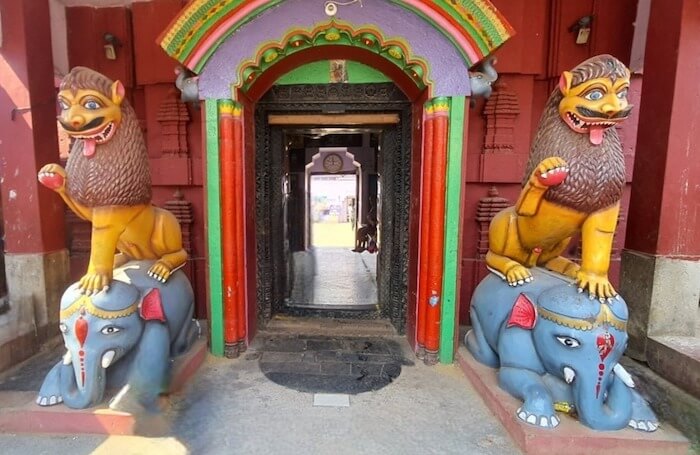
There are four entrance points, one each in all the cardinal directions. The main entrance is from the east through a beautiful gate called Simhadwara, the entrance is flanked by sculptures of menacing lions astride elephants. The entrance is topped by a beautiful tower or deula.
A squarish Vimana topped with Amalakha, Kalasha and a flag is erected over the Garbagriha. Four lions can be seen on the four corners of the Vimana. The Garbagriha is accessed through a Jagamohana (Hall) connected by an Antarala ( connecting passage).
Many sculptures and images that belong to earlier periods including that of the Bhaumakaras and the Somvanshis are seen attached to the wall that encloses the temple complex and also on the outer walls of many subsidiary shrines and structures.
Visiting Biraja Temple Shakti Peeth Jajpur
A strange sense of awe gripped us, as we walked towards the small entrance of the Biraja Devi temple. The fierce lions guarding the entrance seemed to have a life of their own and it looked as if their gaze was following us.
The afternoon sun cast its harsh glare as we emerged into the outer courtyard, of the temple, which is open to the sky. Many small subsidiary shrines lie scattered around the main temple.
A tree festooned with colourful cloth talismans tied by the faithful stands welcomingly towards the right of the main temple.
We passed a few people returning after having the darshan of Ma Biraja Devi, their faces gleaming with a glow of contentment. As soon as we crossed the threshold of the small entrance that led to the inner chambers of the temple, we were bang in front of the Simha Stambh.
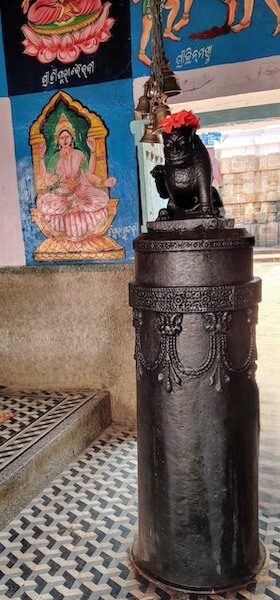
This is a black stone pedestal on which can be seen the Lion mount of the Goddess Biraja Devi. The mount of the Goddess seems to have parked itself right in front of its Master, awaiting her supreme signal. On the walls on the three sides of the Simha Stambh were painting depicting different incidents related to Ma Biraja Devi.
A covered portico beside the Simha Stambha served as a hall for conducting various rites and rituals. It was buzzing with activity. The sound of Vedic Stotras resonated through the air and merged with the excited chatter of people. A few men were solemnly engaged in conducting rituals for their dead kin guided by priests.
We now stood in front of an open quadrangle. Towards the west was a small door that led to the Jagamohana which was crowned by a small, sloping tower or Vimana called Pidha Deula according to the terminology of Odia architecture. The Jagamohana is the hall directly in front of the sanctum or Garbagriha, from where the devotees can have a glimpse of the deity.
We crossed the quadrangle and entered a semi-dark hall following a path along the wall, and emerged right in front of the Garbagriha.
People jostled for space to get a better view of the Goddess Biraja Devi. The priests had their job cut out, as they accepted the offerings of the devotees on behalf of the Goddess, and also shooed them away to ensure the smooth flow of the crowd.
And then, behind the human wall formed by the priests, a few metres away, we caught a tantalizing glimpse of her, the Mother Goddess, Ma Biraja Devi, herself!
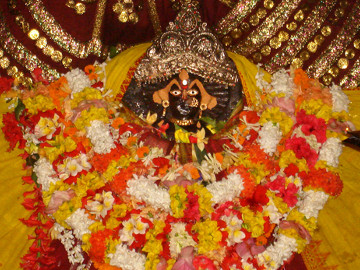
She looked resplendent in red, bedecked with colourful flowers. Her shiny eyes shone like pearls, glistening in the backdrop of her face which was of black stone. The crown on her head glittered mesmerizingly and Ma Biraja Devi seemed to be looking directly at us with her piercing eyes, or so it must have seemed to everyone who stood there in front of her sanctum at that time.
Time seemed to stand still as we spent a few blissful moments in the presence of a divinity who has been an enduring icon of faith since time immemorial.
As we made our way out of the inner chamber of Biraja Temple in Odisha, we spotted a couple who had brought their infant to be blessed by Biraja Devi. We watched as a beaming grandfather held the tiny life in his arms, and the proud mother looked on. It was such an apt moment as we stood in the benevolent presence of the divine power in whom resided the powers of creation and destruction, the Adi Para Shakti or Supreme Power.
Iconography Of Biraja Maa In The Garbagriha | Sanctum Of Biraja Temple In Odisha
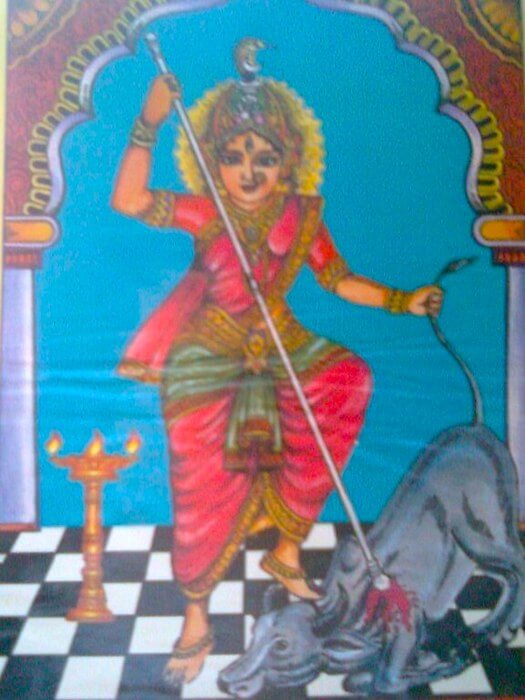
When you see the Goddess inside the Biraja Temple in Jajpur, you will not understand the iconography of the ancient idol completely. The Goddess is covered completely with flowers and only her face and head are visible. To really understand the elements of the Biraja Mata idol which dates back to the Gupta Period, you would need to visit the Biraja Devi Temple Museum which has a replica of the idol.
Biraja Devi is depicted in the unique form of a two-armed Mahishasuramardini. She is shown holding a trident in her right hand, while with the left hand, she grasps the tail of a buffalo which is the demon Mahishasura. With her left knee, slightly raised, the Goddess can be seen, trampling the head of the buffalo with her left foot. Her right foot is planted firmly on the ground, and her trident can be seen piercing the demon in the form of a Buffalo.
The crown of Biraja Devi at the Biraja temple in Odisha has some unique elements. The crown has the image of Ganesha, a Shivalinga, a moon, and a serpent (Phani) believed to be Vasuki. This iconography present in the crown of Biraja Ma denotes that she is Aadi Shakti and Aadi Parashakti, the supreme Goddess in whom all the energies and power of the universe reside.
It is worth noting that the Lion is absent in the entire iconography of Ma Biraja Devi. The idol is probably connected to the Simba Stambha that stands some metres away inside the entrance of the outer chamber.
Rituals, Worship And Festivals Of Biraja Mandir
Traditional rituals and worship of Ma Biraja Devi at the Shaktipeeth of Odisha have been continuing for centuries. The daily worship of the Goddess follows both Vedic (Agama) and Tantric rites and rituals. The worship of the deity and the various rituals are performed by hereditary priests, who are allocated different chores and look after different aspects of worship. They are termed Pani, Panigrahi, and Kara.
The head priest known as Patimisra is in charge of the day-to-day worship at the temple as well as during festival days. He charts out the daily schedule and festival calendar in consultation with the temple Trust and a committee comprising a group of priests.
Daily Seva Rituals At Biraja Temple Shakti Peeth Jajpur
The morning rituals at the Maa Biraja Devi Temple Jajpur start at 4:00 AM. It begins with the Mukha Marjan, which is washing the face of the deity. This is followed by Danta Kastha, cleaning of the deity’s teeth with a Bilwa stick. After this, the deity is anointed with sandalwood paste, turmeric, and scented oils made from Ashtagandha, Camphor, Cardamom, Cloves, etc.
This is done as a prerequisite to Abhisheka or Panchamruta Snana in which the deity is bathed with milk, ghee, curd, honey, and sugar. After the Panchamruta Snana, the deity is given another bath with water from sacred rivers including the Vaitarani. This ritual is termed Shuddhodhaka Snana.
The deity is then decorated with flowers and garlands, and worshipped by the recitation of mantras, known as Mantropchar. The sacred hymns from the Rigveda like Purushasukta and Sri Sukta are chanted by the priests in front of the deity.
After the ritual of Mantropachar, the Goddess is offered Dhoop, Deep, and Naivedyam. Here incense sticks and oil lamps are lit in front of the deity, and she is offered Bhog or Naivedya (Offering). After this, the garbagriha is opened, and devotees can have the first darshan of the day of Ma Birajadevi. The morning rituals or Seva at Biraja Devi temple end around 4:30 AM.
Around 1 in the afternoon, the midday rituals or Seva begin at the Biraja Shaktipeeth of Odisha. The rituals of the midday seva include the lighting of Dhoop and Deep, arati to the Goddess, Pushpanjali which is worshipping the Goddess with Bilwa leaves and flowers, and Naivedya or offering of sweetened rice. The midday seva is brought to an end with Arghya Samarpan, i.e. offering of water, and Mantrapushpam, the offering of flowers to the accompaniment of sacred mantras.
At around 3:00 PM the afternoon seva begins at the Biraja Temple Shakti Peeth Jajpur. It starts with a ritual called Mukha Soudha, i.e. cleaning the mouth of the deity. After this curd mixed with sugar is offered to the deity. The Garbagriha is then thrown open for devotees to have the darshan of Ma Biraja Devi. This is known as Sahan Mela.
In the evening Arati is performed to Biraja Devi by waving camphor lamps in front of her and offering flowers. After this in a ritual called Samanya Naivedhya, sweets are offered to the deity.
The night rituals or seva begin at around 10:00 PM. with what is known as Nitya Upachar Puja. Naivedya or an offering of Boiled rice and Dal is made. This is followed by Arati, Pushpanjali, and Arghya Samarpan, after which the rituals of the day come to an end.
Ma Biraja Devi is worshipped with the chanting of the Bana Durga Mantra throughout the year, except for the New Moon Day of the Magha Masa or Triveni Amavasya.
Rath Yatra At Biraja Temple of Jajpur – Chariot Festival
The Rath Yatra or chariot festival is the most important festival of Biraja Temple in Odisha as it is in most temples across India. The Rath yatra is celebrated during Durga Puja and is celebrated for nine days. The Rath Yatra of Biraja Devi was a feature that was incorporated into the temple rituals by the Somavanshi rulers.
The dates of the Rath Yatra are confirmed by the Biraja Panji, an almanac followed by the Biraja temple which lists the dates and times of various festivals and rituals central to the temple.
The Rath Yatra festival begins with Sunia which is also the Odia New Year that falls on Bhadrapada Shukla Dwadashi. On this day a procession is taken out from the temple, known as Banajaga Jatra, to find the trees for the making of the chariot. The procession is also termed Bilwa Barani. The Bilwa tree is worshipped after the worship of Ganesh and Saraswati. The construction of the chariot, known as Simhadhvaja, starts on Sunia day.
On the Rath Yatra day, the chariot is kept in front of the Simhadwar and consecrated with all prescribed rites and rituals. After the consecration of the Rath, the Utsav Murthy of Biraja Devi is seated in the chariot, and a grand procession takes place with great pomp and pageantry to the accompaniment of musical instruments and the chanting of sacred hymns. The Rath Yatra goes around the entire compound once for nine days of the festival.
On the ninth day of the Rath Yatra, a puja called Aparajita Puja is performed and the Goddess symbolically kills the demon Mahishasura. After this at midnight, the Goddess descends from the chariot and proceeds towards what is known as Lakhabindha Ground for a special ceremony. The Goddess proceeds towards the ground in a specially made Vimana with a grand procession.
At the Lakhabindha Ground, Biraja Devi is worshipped as, “Mahamari.” After this, a deity named Lakeswari or Dakeshwari is worshipped on the ground and offered a special sweet and aromatic drink. The ritual culminates with the priest shooting an arrow in each of the four cardinal directions as if to declare the sovereignty of Biraja Devi across all four directions. This also marks the end of the Rath Yatra.
The Chariot Of Biraja Devi
Singhadhwaja Ratha is the name of the chariot which is built for the Rath Yatra of Birajadevi in Jajpur, Odisha. The Rath is decorated with black, white, and red coloured cloth. Black symbolizes Mahakali, white is symbolic of Saraswati, and the colour red stands for Lakshmi. The charioteer (Sarathi) of the Ratha is none other than Chaturmukha Brahma, himself. The chariot has 12 wheels, each having 8 spokes.
Saraswati is considered the protector of the chariot while Brahmacharini is the power that propels the chariot. The dvarapalikas of the chariot are Ganga, Yamuna, Mandakini, Kushavadra, and Bruddha. Asti, Bhaanti, Priya, Naama, and Rupa are the names of the 5 horses that are attached to the chariot, two snakes named Swarnachuda and Shankhachuda are also tethered to the chariot.
Maha Vishnu and Narasimha are the protectors or the Ratha Rakshaks. The Dhwajachakra or wheels of the chariot are named as the Parama Vaishnavi. It is believed that Maha Tripura Sundari exists in the flag of the chariot. In addition, Hati Vidya, Sambhavi Vidya, Kadi Vidya, Sadi Vidya, and Rahasya Vidya are believed to be present in the chariot.
It is believed that whoever has the good fortune of witnessing the Biraja Devi Rathyatra in their lifetime will get salvation or Moksha. The Biraja Mata Rath Yatra is a beautiful aspect of the Shakti culture that is the heritage of Odisha, and Jajpur in particular.
Triveni Amavasya – Birthday Of Maa Biraja Devi
Triveni Amavasya is observed on the No Moon Day of the Magha month of the Hindu calendar. It usually falls in the month of January-February. This day is celebrated as the birthday of Biraja Devi. It is the most important festival of the Biraja Temple Shakti Peeth Jajpur.
On this day the deity is decorated as Goddess Savitri, the consort of Lord Brahma. She is decorated completely in yellow along with gold ornaments and worshipped with the chanting of the holy Gayatri Mantra.
Dola Purnima
Dola Purnima is a festival that is celebrated on the Purnima or Full moon day of the Hindu calendar month of Falguna (January-February). A procession of the Utsav Murthy or representative idol of Biraja Maa is taken in a palanquin procession called Jhulan Jatra to the Dolamandapa or Dolavedi. This is a platform with a pedestal within the premises of the Biraja temple.
A team of priests led by the Chief Priest worship the Goddess according to various prescribed rites and rituals. The new almanac of the temple, Biraja Panjika is read out in front of the Goddess. The new annual Biraja Panjika is however officially released on the occasion of Odia New Year.
Varuni or Baruni Festival
This is a festival celebrated on an auspicious day in the Hindu calendar month of Chaitra that falls in March or April. On this day, people from far and wide congregate in Jajpur for a holy dip in the waters of the Vaitarani river. The deity Biraja Devi is also bathed in the holy waters of the Vaitarani river on this day, at the auspicious hour.
Mahavisuva Sankranti
Mahavisuva Sankranti, also known as Pana Sankranti is celebrated on the first day of the solar month of Vaisakha according to the Hindu calendar. On this day the deity is grandly decorated with the “Bada Simhara Vesa,” and special worship is carried out. A special drink, “Prapanaka,” is offered. Usually, this is a juice made from the Bel fruit. The Biraja Panjika is once again read in front of the main deity in the Garbagriha. Maha Bishuba Sankranti or Pana Sankranti is the Odia New Year.
Chandana Purnima
This is a special day when one should visit the Biraja Devi temple to get a glimpse of the deity in a different form. On a full moon day during the month of May or June, the face of the Goddess is anointed with sandalwood paste. This is called Chandana Vesa, and it is a divine sight for the beholders.
Durga Puja
Durga Puja is celebrated with great fervour and devotion at the Biraja temple. The festival is spread over a period of 16 days. Worship of the deity is done according to Tantric and Agama shastras. The temple sees huge footfalls during the festive season of Durga Puja.
These are some of the important festivals celebrated at Biraja Temple Shakti Peeth Jajpur, however, there are many more festivals that are celebrated with great devotion and fervour at the temple.
Nabhigaya – Sacred Place For Pind Daan | Offerings To Dead Forefathers
The performance of Shradh and Pind Daan is considered to liberate the soul of the dead and give them eternal bliss according to Hindu belief. Pind Daan is the act of offering balls of cooked rice mixed with black sesame seeds to the souls of ancestors. After specific rites, these balls of rice are offered to crows, and cows, or immersed in the sea or ocean.
It is believed that in this manner the offering reaches the souls or the Atma of the dead ancestors. There are some sacred places mentioned in the Puranas and other ancient texts where doing Pind Daan is considered especially auspicious. Biraja Devi temple which is also known as Nabhi Gaya or Navi Gaya is one such sacred place for doing Shradh and Pind Daan for the dead kin.
Why is the Biraja Temple Shakti Peeth Jajpur known as Nabhi Gaya? What is the reason it is considered sacred for offering Pind Daan?
The Legend Of Gayasura And Biraja Temple In Odisha
To understand the genesis of Nabhigaya, one needs to know about the legend of Gayasura. This is mentioned in the Vayu Purana and the Bhagvata Purana. Gayasura was an Asura (Demon) who practised rigorous austerities and did such intense penance, that the Devas led by Indra were alarmed.
They approached the Trimurtti of Brahma, Vishnu, and Shiva for help. Vishnu came up with a ruse and the three lords of the universe appeared before Gayasura and told him to ask for a boon. Gayasura asked that he become immortal and that he could only be killed by one of the Trimurtis. His boon was granted.
Brimming with arrogance and fearless because of his boon, Gayasura started wreaking havoc against the Devas. Once again the Devas approached the Trimurti for their help. This time the Trimurtis decided to teach Gayasura a lesson, once and for all.
They approached him disguised as Brahmins asking for a place to conduct a Yajna. They convinced Gayasura that the best place would be his own body, as this would ensure his complete salvation. Gayasura agreed and lay down on the earth offering his body as a sacrificial altar and increasing his size to gargantuan proportions. The sacrificial fire was lit on his body, and the Yajna was done. However, Gayasura did not die even after this Yajna.
Finally, Vishnu took out his Sudarshan Chakra and slashed Gayasura into three pieces. The pieces fell in different places. The head fell where the Vishnupad Temple of Gaya is located today, and the place came to be known as Siro Gaya and was dedicated to Vishnu. His navel fell at the Biraja Temple in Jajpur and came to be known as Nabhigaya, dedicated to Brahma. Gayasura’s feet fell in what is now the Sri Kukkuteshwara Swamy temple of Pithapuram in Andhra Pradesh, and the place came to be known as Pada Gaya and was dedicated to Shiva.
Additionally, another legend says that Vishnu as a mark of his victory over Gayasura, placed his Gada (mace) at Jajpur and it came to be known as Gada Kshetra. He placed his conch in Puri and it came to be known as Shankha Kshetra. He places the Sudarshan Chakra at Bhubaneshwar and it was called Chakra Kshetra. The Padma or Lotus was placed in Konark, giving it the name of Padma Kshetra.
All three places are considered sacred for Hindus for offering Pind Daan. It is believed that even Shri Ram had offered Pind Daan in Gaya.
Nabhigaya – The Bottomless Well At Biraja Temple Shakti Peeth Jajpur
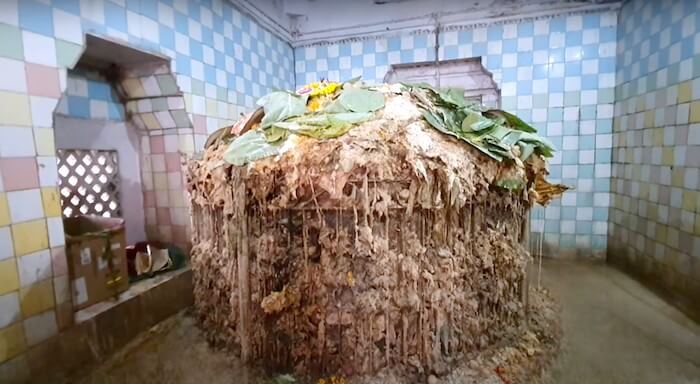
Inside the Biraja Temple in Odisha, is a fathomless well. Anything that is dropped inside disappears after some time. People throng the temple for doing Shradh and Pind Daan for their ancestors. After the completion of all stipulated rites and rituals, the offerings in the form of the Pinds, are dropped into this well. It is believed, that whatever be the quantity of material that is put into the well, it gradually disappears, and the well is empty again.
The fact that this place is also believed to be the place where the navel of Sati is believed to have fallen, illustrates the synergy between Vaishnavism and Shaktism. A unique religious practice associated with Shradh and Pind Daan at Biraja Temple in Odisha is that people pray to Biraja Devi after the offering has been done.
This is a departure from the normal practice in which it is Vishnu to whom the prayers are addressed. Thousands come to Biraja Devi temple to pray for the liberation of the souls of their dead kin throughout the year, however, the Pitru Paksha, which is a 16-day period in the second half of the Hindu calendar month of Bhadrapada, is the most sacred time to visit Biraja temple for offering Pind Daan.
The Shiva Lingas Of Maa Biraja Devi Temple Jajpur Odisha
Shiva and Shakti are two aspects of divinity. So where Shakti is there, Shiv has to be present. This is demonstrated clearly by the ubiquitous presence of Shiva Lingas of varying sizes within the premises of the Biraja temple in Jajpur. In fact, it is believed that there must be over 1 crore Shiva Lingas installed over time in the Jajpur region.
Koti Linga At Biraja Temple In Odisha
Within the premises of the Biraja Devi temple, near the northern entrance are two halls which are filled with Shiv Lingas of various sizes. A priest informed us that together the Shiva Lingas were 108 in number. The Shiv Lings were symbolic representations of the sacred 12 Jyotirlings as well as other important Shiva temples.
The area of Biraja Kshetra is believed to be triangular and the three apexes of this triangular region are guarded by Shiva Lingas that are named Uttarsvar/Vilvesvara, Varuneshwara, and Kilalateshwara.
Other Temples Inside Biraja Temple, Jajpur
There are many smaller shrines within the perimeter of the Biraja Devi temple. These include many shrines to Shiva. Some of the temples are those dedicated to Isanesvara, Jupesvara, Mrityunjayesvara, Bhusandesvara, Bagalamukhi, and Vaidyanatha.
Bagalamukhi Temple
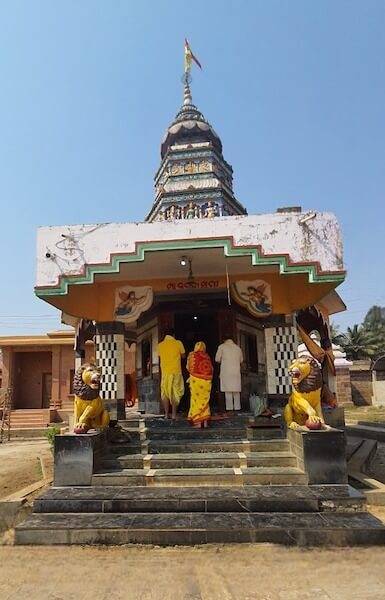
A small but beautiful temple stands towards the right corner, behind the Garbagriha of the Biraja Devi Temple. This is a temple dedicated to Bagalamukhi, one of the 10 Tantric Goddesses collectively known as Mahavidyas. The Goddess is armed with a cudgel and is believed to use it to smash away the delusions and myths of her devotees. The temple is adorned with a porch which has two lion sculptures on either side. The temple has a door which is adorned with carved images of the 10 Mahavidyas.
Baba Baidyanath Temple – Vaidyanath Temple
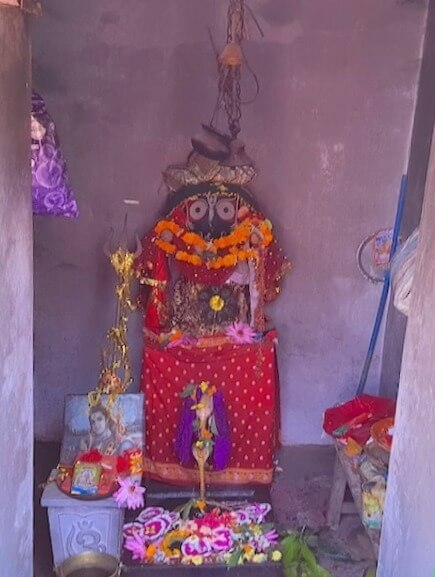
In front of the main Biraja Devi shrine is a small shrine to Shiva who is worshipped here as Baba Vaidyanath. There are many temples across India where Shiva is worshipped as Vaidyanath or Baijnath. This is of course a small shrine as compared to the Vaidyanath temples in Baijnath, Himachal Pradesh, and Baijnath Uttarakhand.
There is a Shiva Linga inside the small temple, a priest sat beside the door of the temple. The Shiva Linga had been interestingly decorated to resemble Jagannath, the deity of the famous temple in Puri.
Brahma Kund – Sacred Pond Of Maa Biraja Devi Temple Jajpur
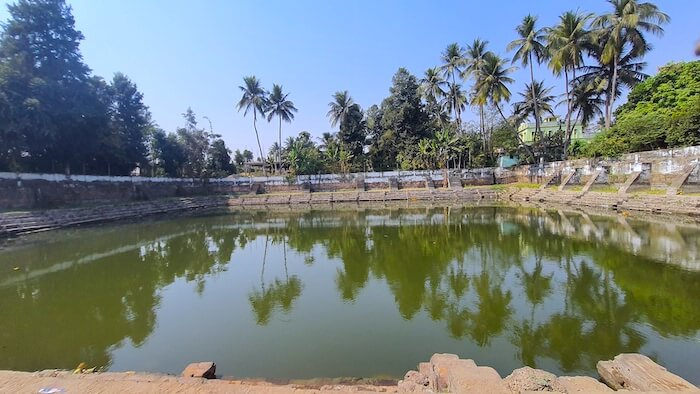
There is a pond which must have been originally a part of the Biraja Devi Temple, located near the eastern periphery of the temple, just across the road. This waterbody is Brahma Kund. It was undergoing some sort of redevelopment when we visited.
The Brahma Kund is a square-shaped water body, with steps on all four sides leading down to the water. It has the appearance of a stepwell.
We found ruins of sculptures on the walls of the path that led down to the pond as well as on the wall that rimmed it on four sides. It must have been a grand sight in its heyday, with all four side walls covered with beautiful sculptures and carvings, and the crystal clear water in the centre reflecting their images.
Brahma Kund is believed to be the legendary place where Lord Brahma performed a Yaga, and out of the fire emerged Biraja Devi. It was surprising to note that the place was deserted, considering its mythological importance. However, that very fact also rendered Brahma Kund with a serene ambience.
Biraja Temple Timings And Other Information
Here is some good-to-know information before visiting the temple.
- Biraja temple opens early in the morning, it is open for Darshan from 5:30 AM to 1:30 PM and then again from 3:00 PM to 9:00 PM
- If you are planning to do some rites like Shradh or Pind Daan, plan your time accordingly
- Biraja Temple distance from Jajpur is about 2 kilometres and from Jajpur Road it is 33 kilometres
- After visiting the Biraja temple, visit the Biraja Temple Museum, and the Brahma Kund, all are within walking distance
- Biraja Temple Shakti Peeth Jajpur is a sacred place, ensure to dress appropriately as befits a place of worship
- Photography is allowed inside the temple premises, however, photography of the deity inside the Garbagriha is prohibited, ensure to observe proper photography etiquette befitting a place of worship
Other Famous Temples In Jajpur District | Buddhist Monasteries
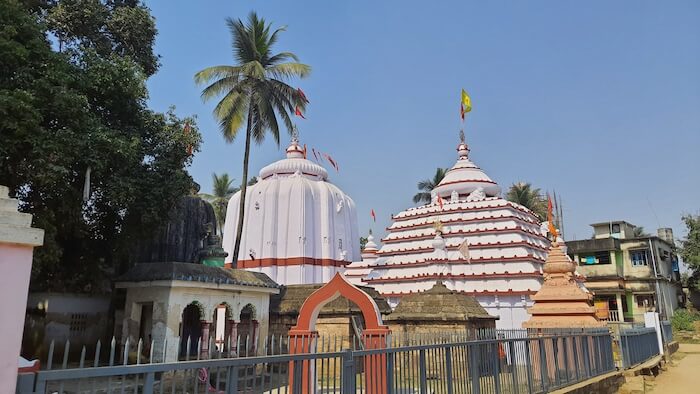
Jajpur district is a heritage district and has a long history and finds mention even in the Puranas and other ancient texts. There are many ancient temples in Jajpur as well as in the vicinity. Here is a list of the famous temples of the Jajpur district that you must include in your Jajpur itinerary.
- Biraja Temple
- Saptamatrika Temple
- Jagannatha Temple
- Varahanatha Temple
- Chandikhol Chandi Temple
- Chhatia Bata Jagannath Temple
- Lakshmi Narayan Temple
- Surya Narayan Temple
- Budha Ganesha Temple
- Maa Borei Temple
- Gokarneshwar Temple
- Ratnagiri Monastery
- Udayagiri Monastery
- Pushpagiri Vihara At Langudi Hill
Images of Biraja Temple Jajpur Odisha | Biraja Temple Photos
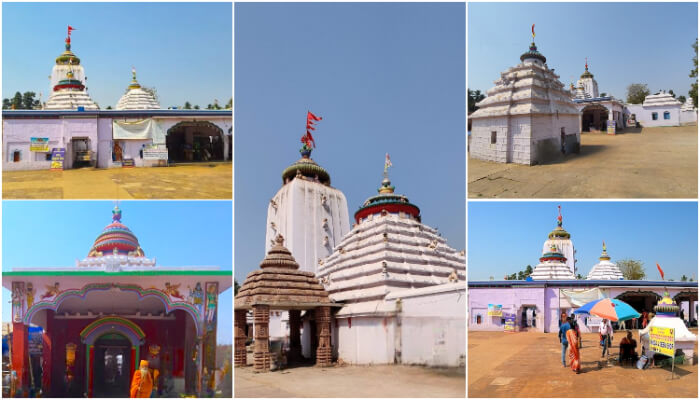
Here are some haunting images of the Biraja temple that hopefully conveys a part of the spiritual power that the place exudes.
How To Reach Biraja Temple, Jajpur | Biraja Temple Location
The Biraja Devi temple is a Shakti Peeth located near the town of Jajpur in the Jajpur district of Odisha, India. It is a sacred pilgrimage centre of the Hindus and also a historical landmark in Odisha.
Biraja Temple Route Map
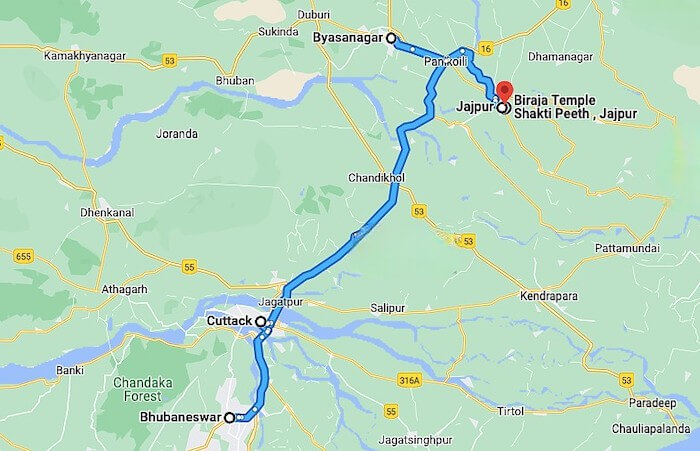
Click here for a route map of Bhubaneswar – Cuttack – Jajpur – Biraja Temple
- Jajpur to Biraja Temple distance is about 2 kilometres
- Jajpur Road to Biraja temple Shakti Peeth is about 33 kilometres
- Bhubaneshwar to Biraja temple distance is about 100 kilometres
- Cuttack to Biraja temple distance is about 78 kilometres
Reaching Biraja Temple, Jajpur By Air
The nearest airport to the Biraja temple is the Biju Patnaik International Airport in Bhubaneshwar at a distance of about 103 kilometres. You can fly to Bhubaneshwar from places across India including Ahmedabad Allahabad, Bangalore, Kolkata, Chennai, Delhi, Goa, and Mumbai. From Bhubaneshwar, you can travel by road to Jajpur.
Reaching Biraja Temple, Jajpur By Train
The nearest Railway Stations To Biraja Temple Jajpur Orissa is the Jajpur-Keonjhar Road railway station near Byasnagar in Jajpur Road, at a distance of about 33 kilometres.
Reaching Biraja Temple, Jajpur By Train
The temple is well connected by road to other places in the Jajpur district as well as with places like Cuttack and Odisha.
Reaching Biraja Temple By Road from Jajpur Road
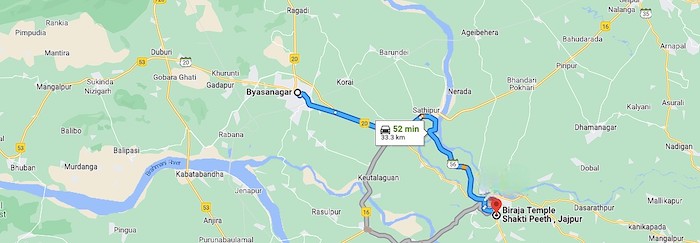
Click here for directions to reach Biraja Temple from Jajpur Road, Byasanagar.
If you are planning a visit to Jajpur, you can book your flight tickets right here through Air India (Domestic) or Air India (International), or Priceline and fly to Bhubaneswar. If you are thinking of a road trip, do check out the rental car options.
Where To Stay When Visiting Biraja Temple Shakti Peeth Jajpur
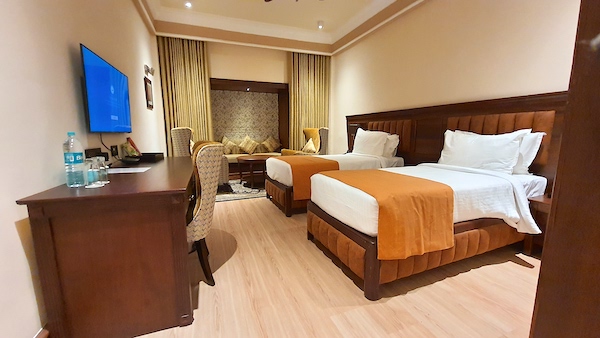
You will not find hotels near Biraja Temple. The best option is to stay in the Byasnagar area of Jajpur where many good hotels are located. We stayed at the Jajati Courtyard, a new hotel. There are many luxury hotels to choose from on Jajpur Road.
If you are planning to book any of the hotels in Jajpur or anywhere else in Odisha, India you can book right here – TripAdvisor or Hotels.com or HotelsCombined
and save a lot by getting the best deals on booking your stay.
| Click to book the best hotels in Jajpur or hotels in Bhubaneswar |
|---|
Maa Biraja Devi Temple Jajpur – FAQ About Biraja Temple
Who is Maa Biraja?
Maa Biraja Devi is Adi Shakti, a form of Parvati (Girija) and Mahishasuramardini Durga. She is the supreme power or Adi Parashakti. According to legend, she was invoked by Brahma in the course of a Yaga on the banks of the Vaitarani River in the Jajpur district of Odisha, India.
Who built the Biraja temple? Which king built Biraja Temple?
The oldest known structure of the Biraja temple was built by the kings of the Gupta dynasty, probably in the 5th century CE. The Somavanshi King Yayati II also referred to as Yayati Keshari built a temple to Biraja Devi around the 11th century.
The temple was destroyed in the mid of the 16th century by the forces of Kalapahar, a commander of the Bengal Sultanate. The temple was repaired and reconstructed in the 19th century by a local Zamindar named Sudarshan Mohapatra.
Why Biraja temple is famous?
Biraja temple is one of the 18 Shakti Pithas listed by Adi Shankaracharya. It is also one of the Trigaya Kshetras and is known as Nabhi Gaya, a sacred place for offering Pinda Daan to ancestors.
Where is Biraja Devi Temple?
Biraja temple is located in the Jajpur district of the eastern Indian state of Odisha.
How to reach Biraja Devi temple?
Biraja Devi temple is just about 2 kilometres from Jajpur town and about 33 kilometres from Jajpur Road and easily accessed by road.
Which station is near Biraja Temple?
The nearest railway station to Biraja Temple is the Jajpur-Keonjhar railway station near Byasnagar on Jajpur Road at a distance of about 33 kilometres.
What is the architecture of Biraja Temple?
The Biraja temple is built in the typical Kalinga or Odia architectural style. The temple has a main entrance on the eastern side and small gates on the other three sides. There is a squarish Rekha Deula over the Garbagriha and a Pida Deula over a small Jaganmohana. The Garbagriha and Jaganmohana are connected by an antarala.
Is there any Shakti Peeth in Odisha?
Odisha has two Shakti Peeths. One is the Biraja Temple in Jajpur, and the other is the Tara Tarini temple in Purushottampur in the Ganjam district.
A visit to the Biraja Devi Mandir is sure to fill your being with bliss and leave you rejuvenated by the positive vibrations that resonate in the temple. It is a powerful Kshetra with infinite spiritual energy, it is a place that can only be experienced.
We hope that our Biraja temple post manages to convey at least a portion of the sanctity and importance of the place. We also hope that the information we have shared here serves as a complete guide to visiting the Biraja Temple in Jajpur.
Our visit to the District of Jajpur in Odisha was part of a familiarization trip organized by the Jajpur District Administration. The views and opinions expressed in this blog post are our own. #Jajpurodisha #HACTJajpur #visitjajpur #Odishatourism #UNWTO #jajpur #Odisha #BirajaTemple
We are a reader-supported site. This means, at no additional cost to you, we may earn a small commission if you book a flight or hotel, or make a purchase through one of our affiliate links. Thank you for your support!
Flights – Air India (Domestic) or Air India (International), or Priceline
Tours – Click to book top tours around the world. Book tours and activities here.
Experiences – Book your next unforgettable experience here, with flexible bookings and free cancellations. Reserve tours and activities now and pay later.
Hotels – Click to book the best hotels/resorts. Choose the best stay options with TripAdvisor or Hotels.com, or HotelsCombined
Travel Insurance – Click to book Travel Insurance that covers a range of travel insurance and safety services including medical emergencies, lost luggage, trip cancellation and more
Visas and Travel Documents Application – Click here for Online Travel Visa Check
Online Passport Photo – Get Your Passport Photo Online here
Do You Love Traveling?
Do you want to know how to travel the world? We have put together a very useful travel resources page with the best travel tips. Go check it out now. Thanks for visiting our site Voyager - imvoyager.com and taking the time to read this post! If you wish to collaborate/work with us then reach us at imvoyager18@gmail.com We’d love it if you’d comment by sharing your thoughts on this post and share this post on social media and with your friends. Follow our journey on our social media channels: Facebook X Instagram Pinterest YouTube
Start dreaming about your next adventure with Tripadvisor. Book your next unforgettable experience here with flexible bookings and free cancellations.
Flight booking online at the best fare
60+ Million Users Trust TripAdvisor With Their Travel Plans. Shouldn't You?

Sandy & Vyjay are a husband and wife duo who are travel content creators. They are co-founders of this travel website and are one of the leading travel content creators in India.
Sandy & Vyjay quit their successful corporate careers to pursue their passion for travel and writing full-time. Their dedication has earned them the “Best Travel Writer” award and numerous accolades on both national and international stages. Focusing on India’s destinations, heritage, and culture, they are passionate advocates for nature and the environment. Through their content, they promote ecotourism and sustainable travel, inspiring others to explore and preserve the beauty of India.
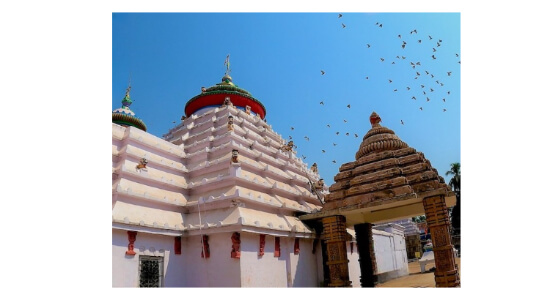
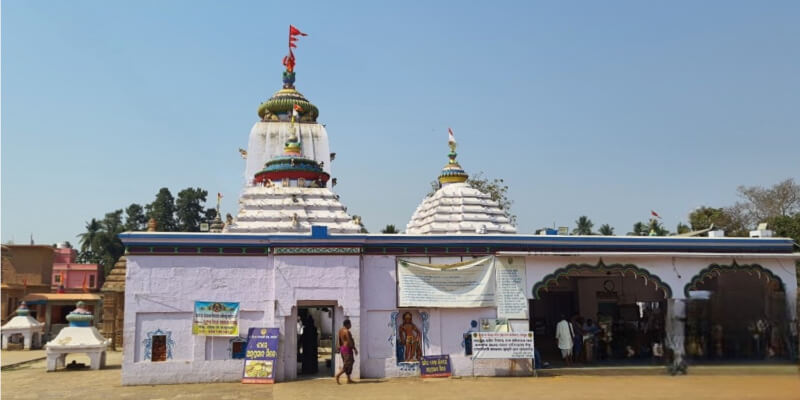
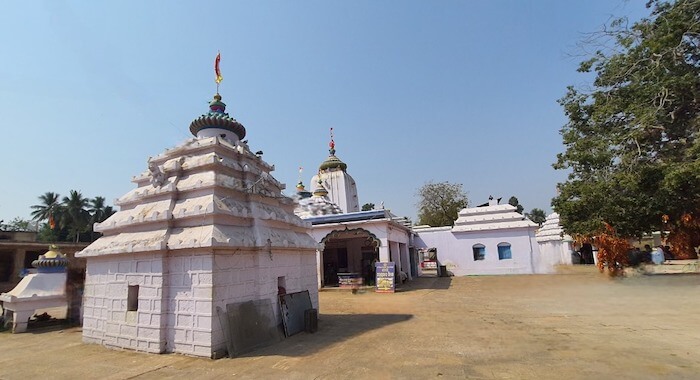
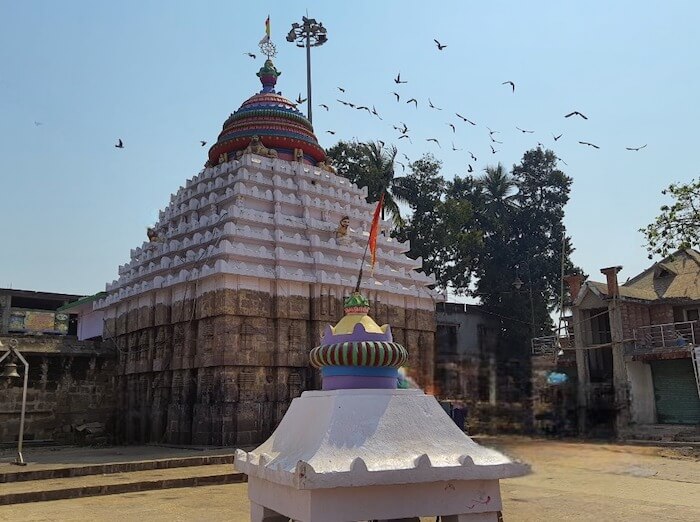
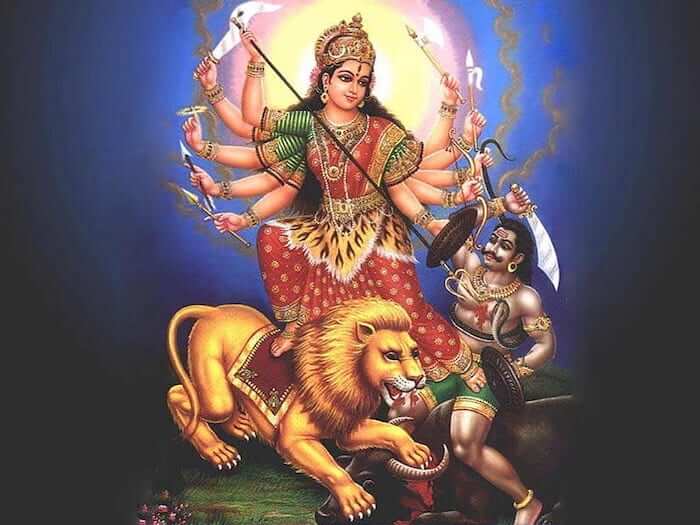
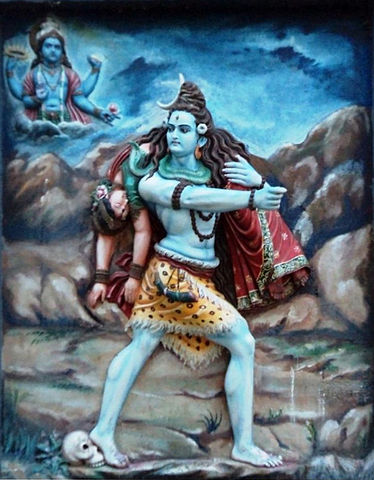
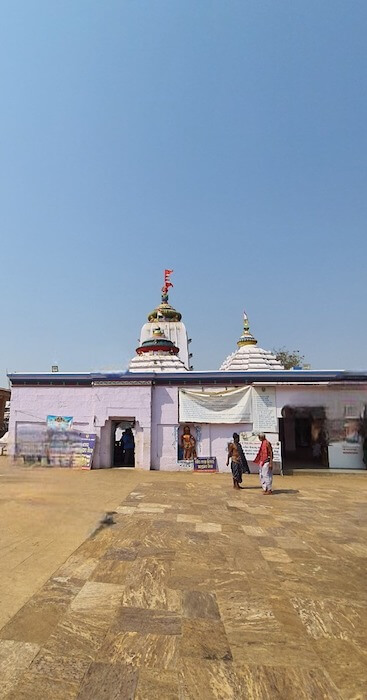
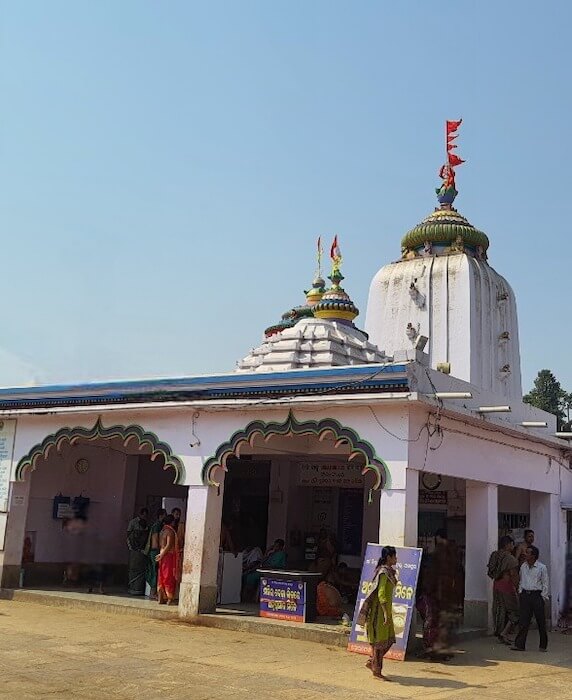
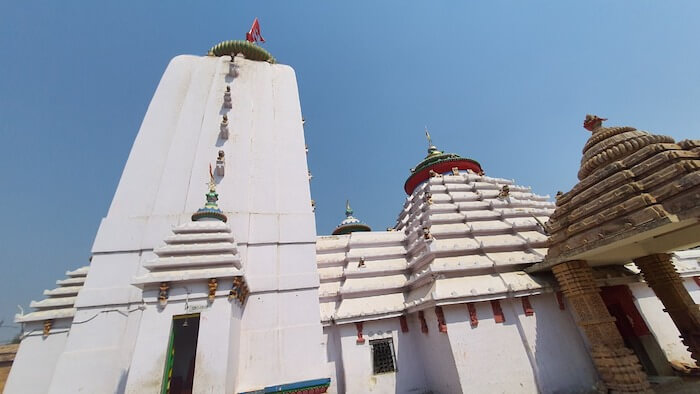
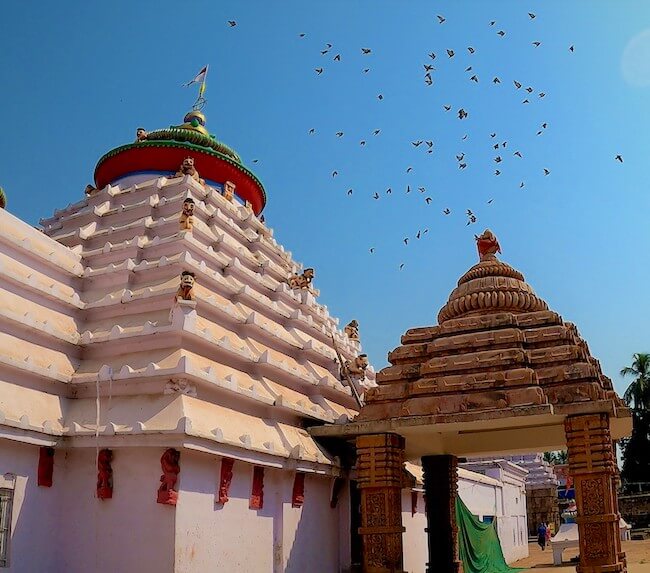
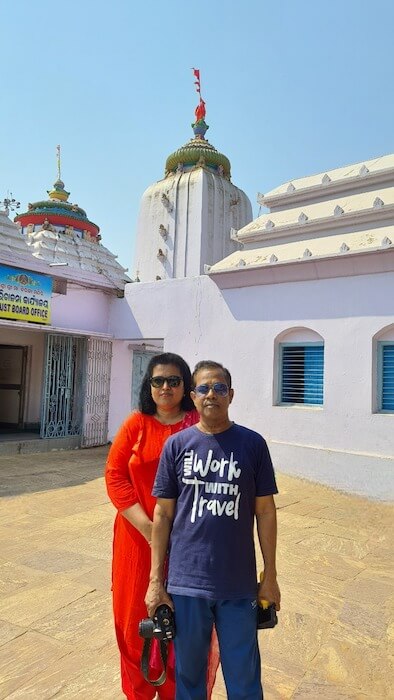
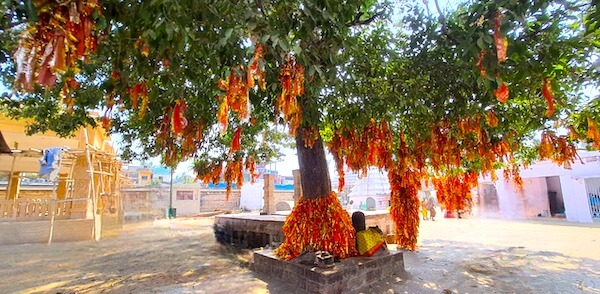
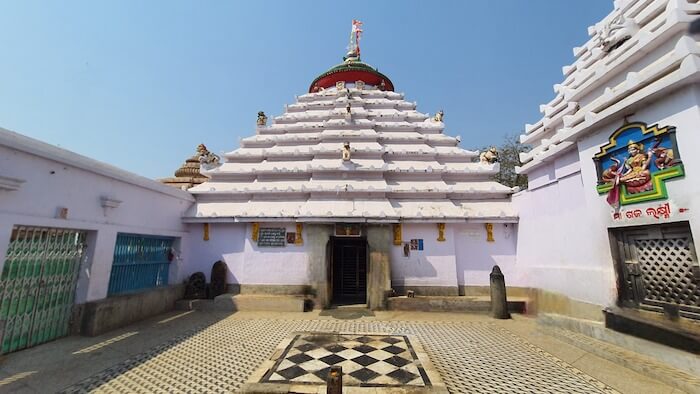
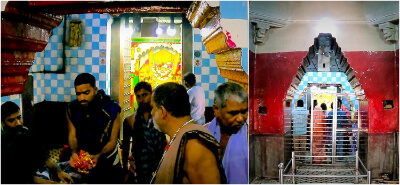
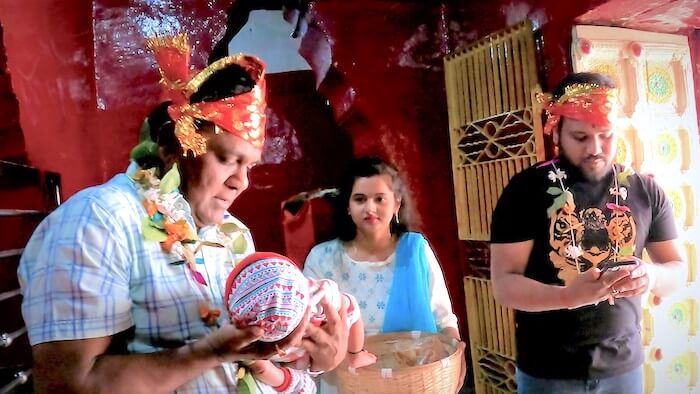
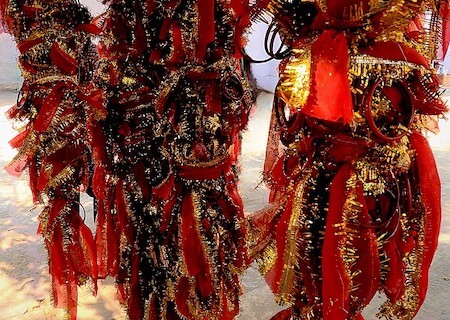
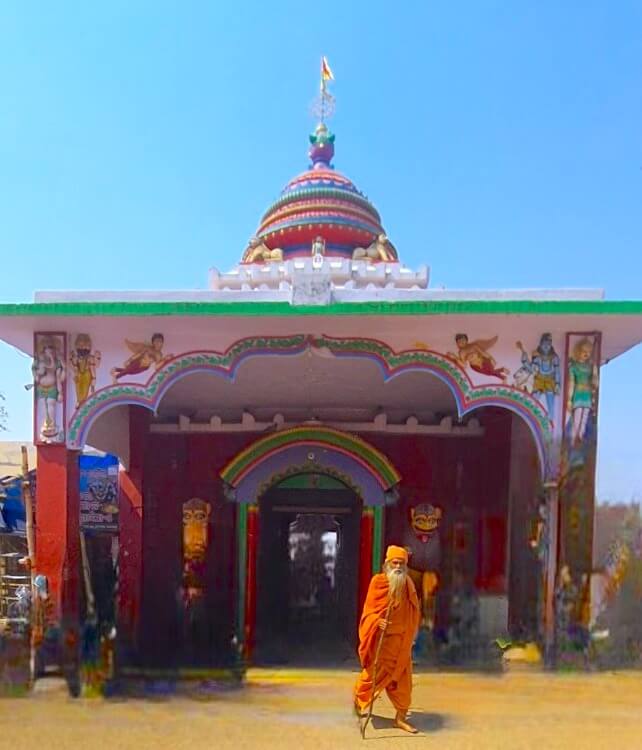
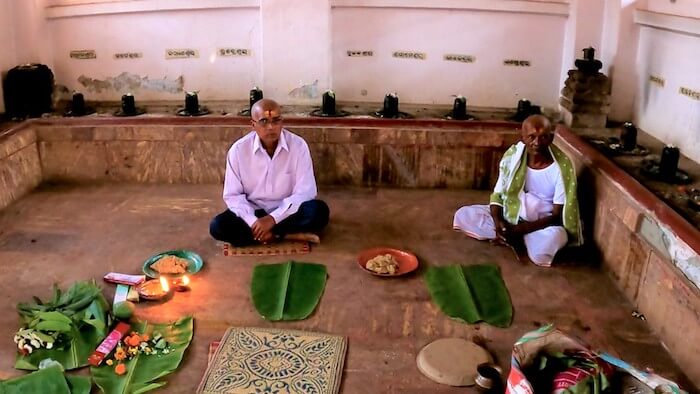

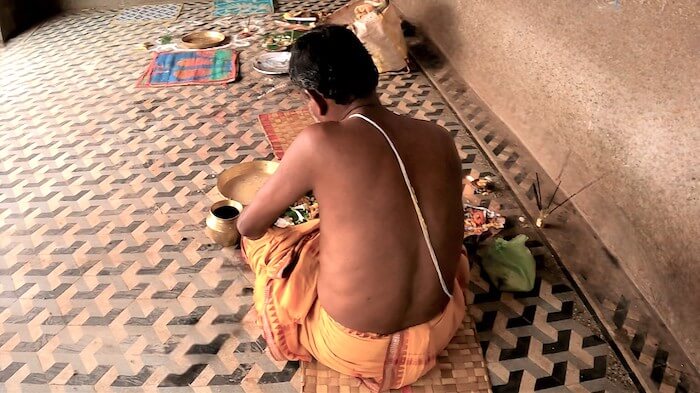
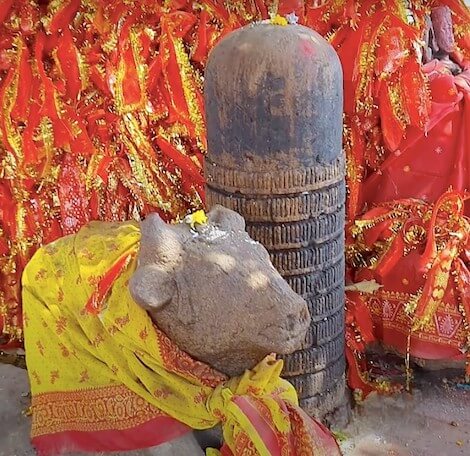
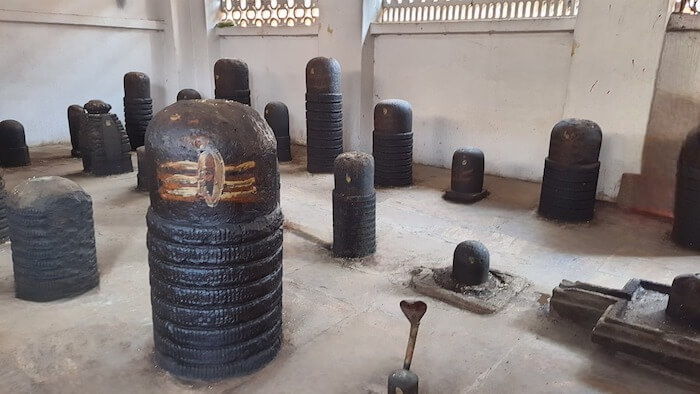
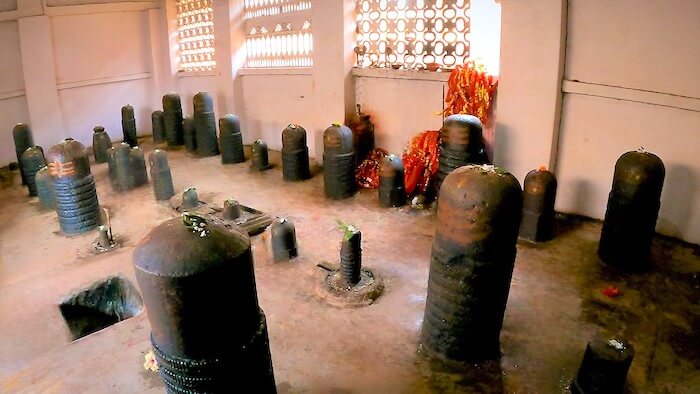
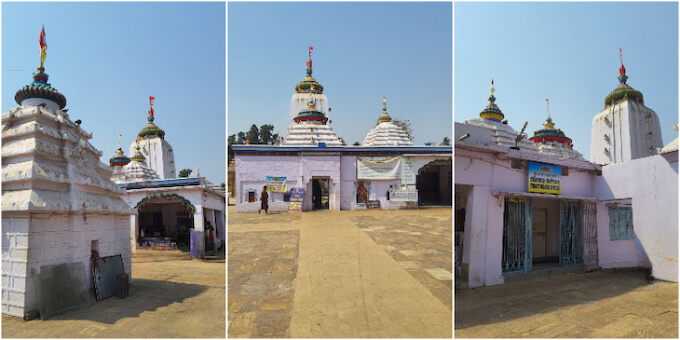
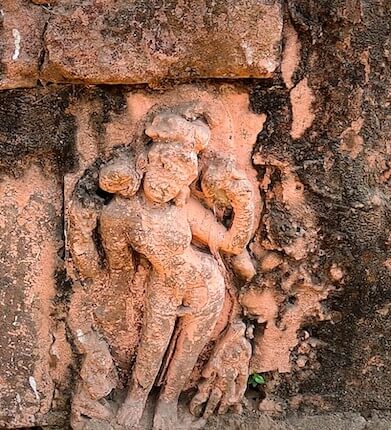
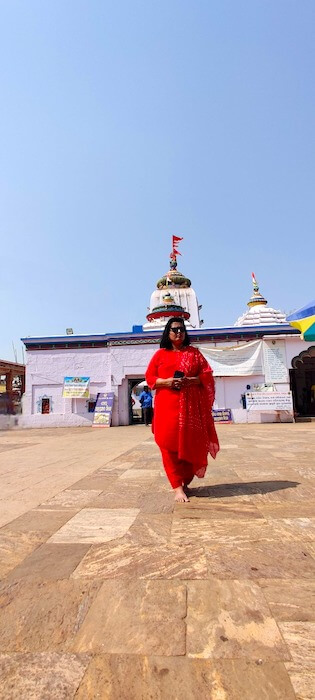
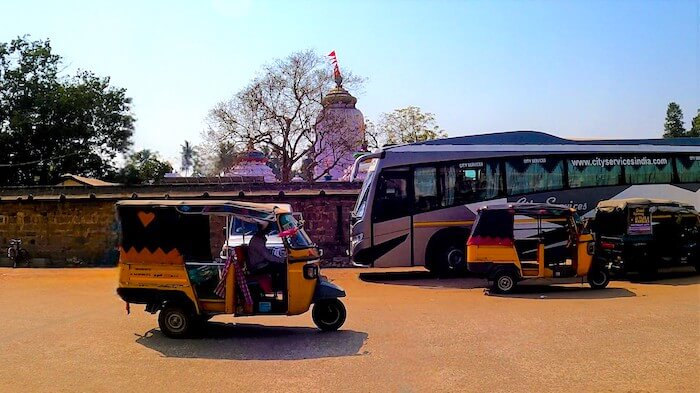
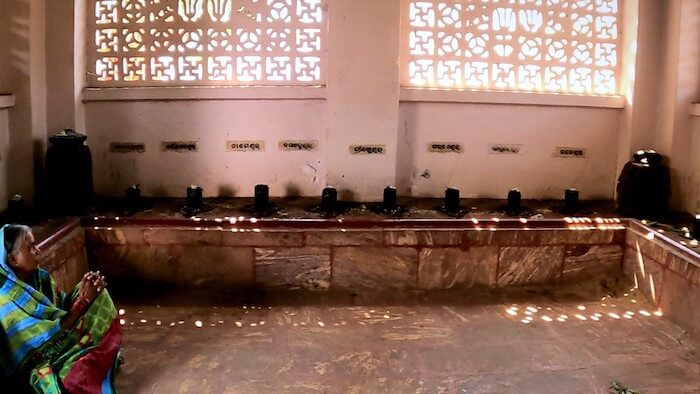

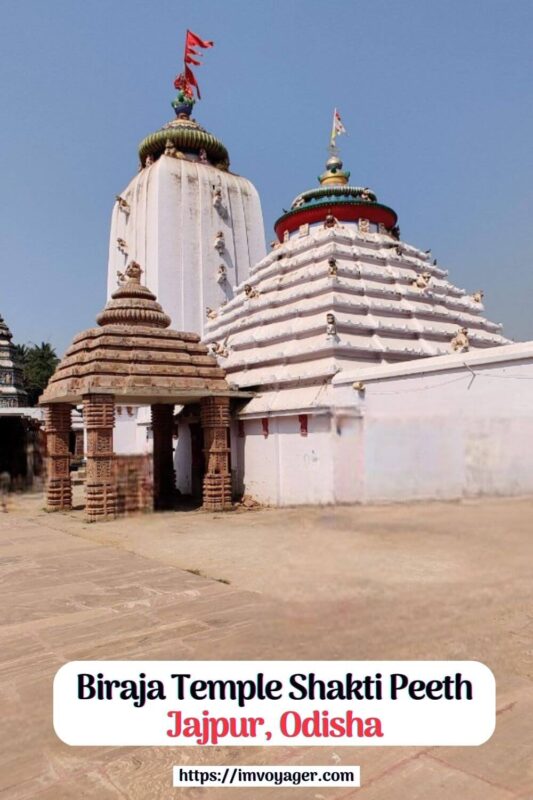




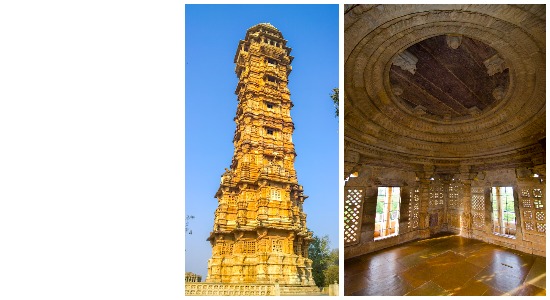

So many stories here! It was like reading one enchanting fairy tale after another. Also that bit about birds and Jagannath Temple is interesting trivia!
I had heard of Biraja Temple but I didn’t know that it was a Shaktipeeth. I’m sure my mother in law would love to visit it.
I was not aware of Maa Biraja and the story behind the temple. Thanks for sharing about this special temple I will surely try to visit in my life.
I have an affinity to Devi temples. The concept of a powerful godess gives me goosebumps. Biraja Devi temple seems to be one that I would be stuck to. The bottom less well is something that i have never heard of. What would be the depth of it. My goodness. So many wonders
Great to know about all this. Phew that was a lot to go through but it was quite a ride. Even I am in total awe when I see certain temples and awesome places.
Thank you for enlightening me about Maa Biraja and the intriguing history of her temple. I had no prior knowledge about it, but now I want to visit it someday with my parents. The idea of a formidable goddess gives me an awe-inspiring feeling, and Biraja Devi temple appears to be one that would captivate me.
That was a long post but full of information that I didn’t know. I dine know about Biraja Temple. Indian Mythology is so fascinating that each temple and stories of every Gods/Goddesses is equally interesting.